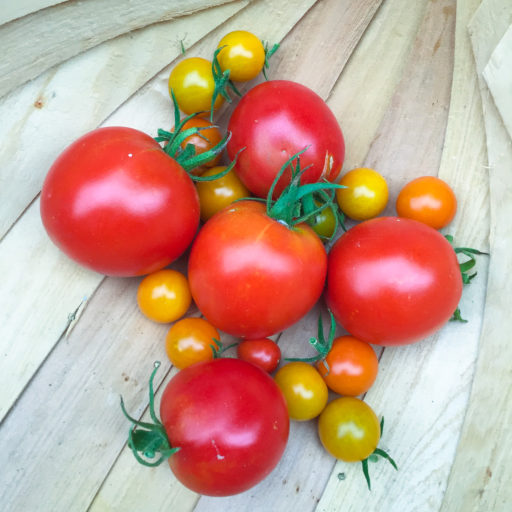Why We're Only Growing Weird Indeterminate Tomatoes
When you decide it's time to grow tomatoes, you must figure out one big thing before everything else. Will you grow determinate or indeterminate tomatoes? You can't enter into this decision lightly.
Don’t be like me, just saying "Hey, I'll grow tomatoes," and picking up whatever little sprout the garden center has on display. Before you know it you'll be fighting back a kudzu-like weed, reaching its tendrils out past the garden and threatening to swallow your car.
I’m not saying kudzu tomatoes are bad. In fact, that's the only kind I grow. I'm just saying you need to know the difference between determinate and indeterminate tomatoes so you can make an informed decision.
Determinate tomatoes are urban-garden friendly
Determinate varieties are those short, shrubby tomato plants that fit nicely into the little wire tomato cages. They get about five feet tall at the most, and play nicely with each other. These tomatoes share soil and water, and don't reach out to poke each other or pester other plants in the bed.
But here's the thing about determinate tomatoes. They're boring. Determinates were developed for commercial tomato growers. Horticulturists developed them for easy harvest, fast maturity, nice color and sturdy shipping. Determinates tend to have one peak fruiting period, and then they're done.
So, while you think they'll work well in a small space (and they do), determinate tomatoes aren't always going to give you the best flavor. Will they be better than a supermarket tomato shipped in from California or Mexico? You bet. But are they the best tomato you could be piling up on a tomato sandwich? Nope. For that, you need to take a walk on the wild side.
Indeterminate tomatoes are crazy good
Indeterminate tomatoes are your weird, artistic friend who never gets anywhere on time, his car is a mess and he always has razor stubble, but he makes the most amazing cappucino and has spectacular taste in music. These are life's original tomatoes, bred purely for flavor. Indeterminates include my favorite heirloom variety, the Cherokee Purple.
Once indeterminate tomatoes start bearing fruit, they just don't stop. We had tomatoes this year until mid November. As long as there's no frost, which in Virginia can sometimes be late November, you'll get tomatoes.
That's the wonderful part. But then there's the crazy part.
Indeterminate tomatoes will take over your garden. They grow over six feet tall, sprouting wild arms in every which direction. They laugh at tomato cages, even the big ones. We still haven't found an effective way to trellis these maniacs. But damn, we sure love to eat them.
We grow a couple of indeterminate slicing beefsteak tomatoes, including the Cherokee Purple, and a few bite-sized ones as well. The cherry tomatoes ripen earlier, and we get those and the big slicers well into fall. There's nothing like a garden fresh tomato in late October to make you feel like you have two giant green thumbs.
So even though you have a small space, make tomato growing worth your trouble. We fight these indeterminate tomatoes back all summer long, but if you're going to the trouble to grow tomatoes, I assume you're doing it for flavor. And if you're doing that, it's indeterminate all the way.
